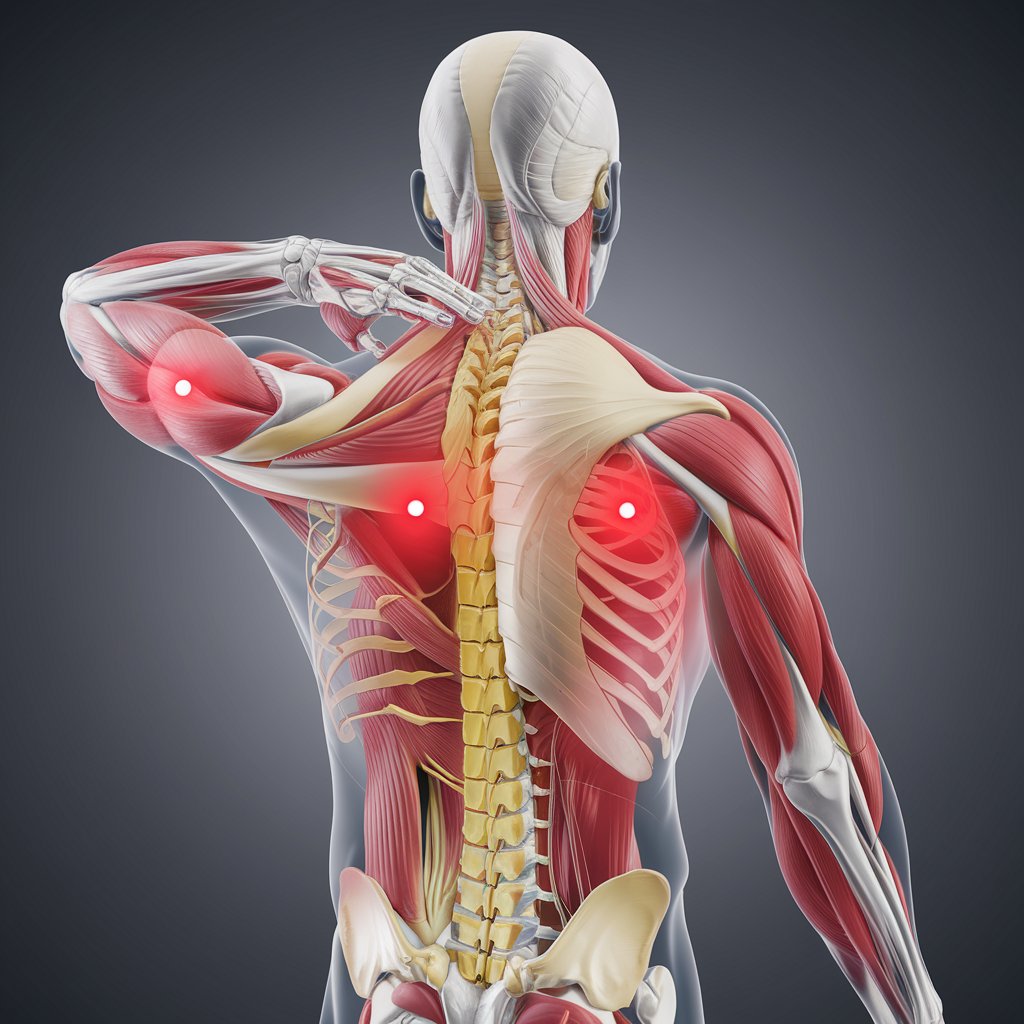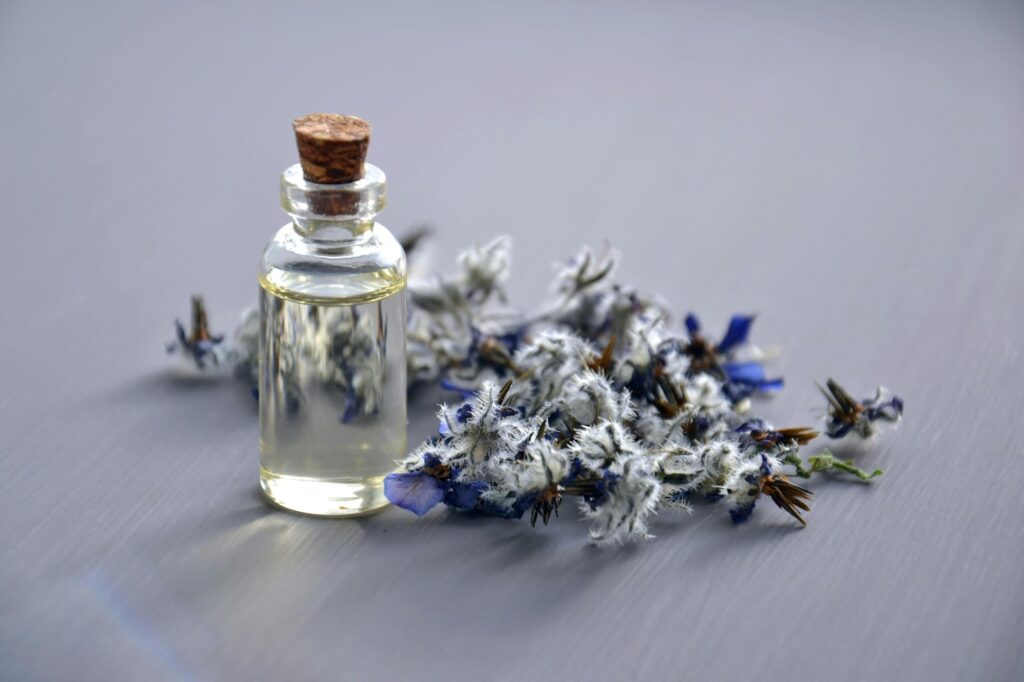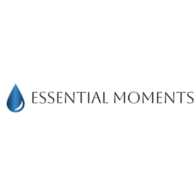Trigger Points: Causes, Symptoms & Effective Treatments

Trigger points are painful spots in muscles that limit movement. Are you curious about their causes and treatments? This article covers symptoms and effective remedies for trigger points, helping you find relief. Understanding Trigger Points When you have muscle knots, also known as trigger points, you’ll feel pain and weakness in specific hyperirritable spots within your skeletal muscles. You might notice these areas as tight bands within your muscles that limit your range of motion and make it difficult for you to perform even basic tasks. Unlike the widespread muscle cramps you might experience that affect your entire muscle, trigger points only impact a small segment of your muscle tissue. These notorious knots cause persistent and intense pain that can disrupt daily life activities. Once activated, they may interfere with normal movement and provoke discomfort at their location and in distant parts of your body (referred pain). Understanding trigger points and their mechanism is beneficial in seeking solutions for this prevalent problem. Definition and Characteristics According to Drs. Janet Travell and David Simons (1992), the definition of a trigger point is “a highly irritable localized spot of exquisite tenderness in a nodule in a palpable taut band of (skeletal) muscle.”The hyperirritable locations are situated in a tight strand of muscle fibers and can be detected as distinct, tender areas through palpation. Trigger points that cause persistent and worsening pain can develop into a chronic condition known as myofascial pain syndrome, contributing to both musculoskeletal and mechanical muscular pain. Research has shown that a high prevalence of trigger points is associated with: myofascial pain psychological disturbance somatic dysfunction Types of Trigger Points Trigger Points can be divided into several groups: 1. Active Trigger Points Active trigger points are well-known for their ability to provoke pain even when the affected muscle is not moving. These specific spots can generate intense, sharp discomfort directly at their location and send pain to distant body regions. 2. Inactive or Latent Trigger Points Alternatively, latent trigger points may not induce pain spontaneously but can limit one’s range of motion and lead to muscle stiffness. It has been suggested that these points are more common in those who live a sedentary lifestyle. Pain from these points only becomes apparent when direct pressure is applied, rendering them less obvious than active trigger points. 3. Central Trigger Points These are the most well-established trigger points when they are active. Also known as primary trigger points, they are located at the center of the muscle belly, where the MEP enters the muscle. Causes of Trigger Points Usually, TrPs develop as a result of: Vitamin Deficiency – B1, B6, B12, C, folic acid, and iron Chronic Stress Condition Stress and Anxiety Sleep Problems Muscle Injury Bad Posture Symptoms of Trigger Points Trigger points can produce a wide array of symptoms, most notably acute and chronic pain that is felt directly at the trigger point or as referred pain in different parts of the body. For example, a trigger point situated in your shoulder might lead to discomfort extending down your arm or up into your neck. Due to similar pain patterns, trigger points are often confused with other ailments like pinched nerves or migraines. Muscle tension and a decrease in range of motion are also prevalent indications associated with trigger points. The application of pressure on such areas may result not only in severe localized pain but also provoke an involuntary “jump sign,” where you may react to the stimulation. This phenomenon typically occurs alongside a local twitch response, an observable or palpable contraction within the muscle. Maintaining Trigger Point Factors The presence of one or more of the following factors presents challenges in the prevention and treatment of trigger points over the long term: Aging Obesity Anorexia Stress patterns Chronicity of trigger point Psychological factors (anxiety, depression, anger) Posture Common Locations of Trigger Points 1. Neck and Shoulders You may frequently develop trigger points in your neck and shoulder areas, especially within the trapezius muscle. These muscle knots can cause tension headaches and significant discomfort in the neck and shoulders. When you engage in repetitive movements or maintain poor posture, you’re more likely to experience the formation of these trigger points. Massage therapy and similar techniques can effectively reduce muscle tension and provide relief by working on the affected areas. 2. Lower Back You could experience trigger points in your lower back, specifically within the Quadratus Lumborum and Iliopsoas muscles; these muscles are common culprits of chronic pain and musculoskeletal issues. Such areas can cause severe distress, potentially hindering your ability to perform everyday tasks. The pain from trigger points in your lower back can radiate throughout various body regions. As a result, specialized interventions like physical therapy and musculoskeletal rehabilitation become essential in addressing your referred pain. 3. Other Frequent Areas You may develop trigger points in your gluteal muscles that can cause pain extending down your legs, often mimicking sciatica symptoms. Similarly, trigger points within your temporomandibular joint can induce jaw discomfort and headaches, which might be mistakenly attributed to dental issues. Recognizing and addressing these areas promptly is crucial for preventing the development of chronic pain conditions. The presence of trigger points in both your gluteal region and temporomandibular joint can significantly impede your mobility and diminish your quality of life due to the intense pain experienced in these areas. Prevention Strategies for Trigger Points 1. Stretching Proper stretching helps prevent muscle imbalances that can lead to the formation of trigger points. Follow these simple steps to stretch effectively and maintain muscle health. Warm Up First Stretch Slowly and Gently Maintain Good Posture Don’t Bounce Breathe Deeply Stay Consistent 2. Strengthening Not using your muscles regularly or staying inactive for long periods leads to muscle weakness. When muscles are weak, they struggle to support your body and handle daily activities, making them more likely to get strained or
The 7 Essential Oils Needed for a Healthier You

What is Essential Oil? Essential oil is a mixture of natural aromatic volatile oils extracted from plants. The most common methods of extraction are steam distillation and cold pressing. Essential oils are used in aromatherapy, pharmaceuticals, fragrance, food, and flavors. They have been utilized medicinally over the centuries and have become an established complementary natural therapy. Benefits of Essential Oils Antioxidant It’s also an excellent choice if you are looking to reduce pain and enjoy its relaxing and soothing properties while opting for an aromatherapy massage. A 2020 study showed the effectiveness of lavender oil in treating psoriasis-like skin inflammation, offering scientific evidence for its topical use. 2. Rose Essential Oil One of the most versatile oils for skincare, rose essential oil, is obtained from the petals of Rosa Damascena Mill. It helps prevent collagen breakdown, lowers gene expression related to skin aging, and improves antioxidant enzyme activities. Research also highlights its effectiveness in protecting the skin from UV-induced damage. Studies have shown that rose essential oil provides pain relief in patients with dysmenorrhea, helps regulate irregular menstrual periods, and supports uterine health. It also has natural antidepressant properties that can boost mood during menstruation, helping you feel more balanced and at ease. Additionally, if you just had a C-section, a 2020 study found that simply inhaling a few drops of rose essential oil after surgery could help you ease pain and calm those post-surgery jitters. 3. Eucalyptus Essential Oil The essential oil of Eucalyptus is revered for its antibacterial and anti-inflammatories properties. When you have a cold or the flu, eucalyptus essential oil is an expectorant to ease discomfort and remove toxins and germs from your body. Conversely, Eucalyptus essential oil offers exceptional care for various scalp conditions if used as a scalp tonic. It effectively combats dandruff and seborrheic dermatitis while providing a natural defense against bacterial and fungal infections. To maximize its benefits, blend eucalyptus oil with nourishing carrier oils or opt for hair care products specifically formulated with the ingredient. 4. Tea Tree Essential Oil Once a hidden gem in traditional medicine, it’s now a go-to natural solution for combating infections and calming inflammation. Looking at everything from its germ-fighting to local antiseptic for burns and cuts, tea tree essential oil can provide relief for various health issues, including: If you have oily or acne-prone skin, tea tree oil can be a game-changer for you. Studies show that tea tree oil is especially effective for oily and acne-prone skin, helping to balance oil production, clearing up stubborn spots, and even improving chronic gingivitis. 5. Rosemary Essential Oil Rosemary essential oil, rich in compounds like eucalyptol and camphor, can help you fight harmful microbes and neutralize damaging free radicals, protecting your skin and overall health. It has been used for centuries to improve brain function, as well as neurological deficits and inflammatory conditions. Studies have shown that rosemary essential oil can potentially protect the liver from damage by boosting the body’s defense mechanisms. Rosemary is also used as a health-boost ingredient in the drinking industry. With its beneficial biological properties, if you’re looking for a natural way to support your health, it’s definitely a go-for choice. 6. Peppermint Essential Oil Peppermint is a genus of plants in the taxonomic family Lamiaceae found in temperate regions worldwide. It can help protect brain function and promote liver, gastrointestinal, kidney, and nervous health. Plus, it can stop fevers, ease muscle tension, and clear sinuses. Other uses for peppermint essential oil: Peppermint is an excellent choice for easing discomfort after physical activity, energizing, and providing you the stamina to recover. Its analgesic and antispasmodic properties make it great for relaxing tight muscles. The cooling sensation of peppermint is also refreshing after an intense training session. 7. Frankincense Essential Oil Frankincense essential oil can be significantly beneficial if you seek emotional reinforcement and mental peace. Try using it during your meditation and yoga practices to boost concentration. When Frankincense essential oil is used with a diffuser, it alleviates stress and tension and promotes an ambiance of calmness. Research has been made on Frankincense essential oil efficiency as a topical anti-aging therapy and shows promising results. How do I store my Essential Oils? Frequently Asked Q’s Can essential oils be applied directly to the skin? You should always dilute essential oils with a carrier oil before applying them to your skin. How long can I inhale essential oils directly? It’s best to inhale essential oils directly for no more than 15-20 minutes. Keeping it short will help you enjoy the benefits without any discomfort. Is it safe to ingest essential oils? It’s unsafe to ingest essential oils without guidance from a qualified practitioner. Always consult a professional before considering ingestion. How should I store my essential oils? Store your essential oils in a cool, dark place in glass or stainless-steel containers with tightly sealed lids to keep your essential oils fresh. This prevents oxidation and evaporation, ensuring they last longer. What are the benefits of using essential oils in aromatherapy? Using essential oils in aromatherapy can significantly reduce anxiety and improve your mood, making it a great way to enhance your overall well-being and sleep quality. It’s a simple yet effective tool for supporting both your physical and emotional health!

